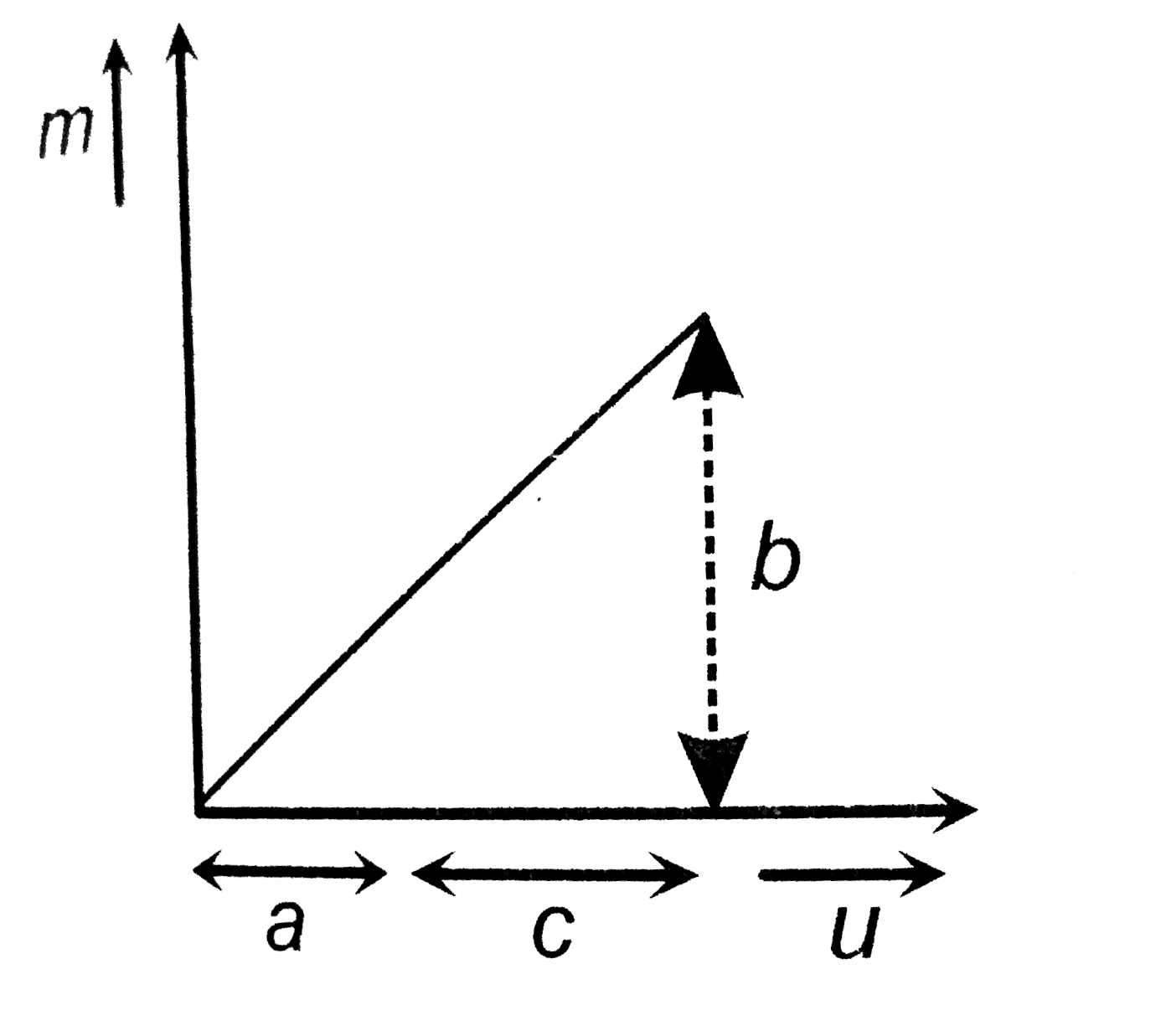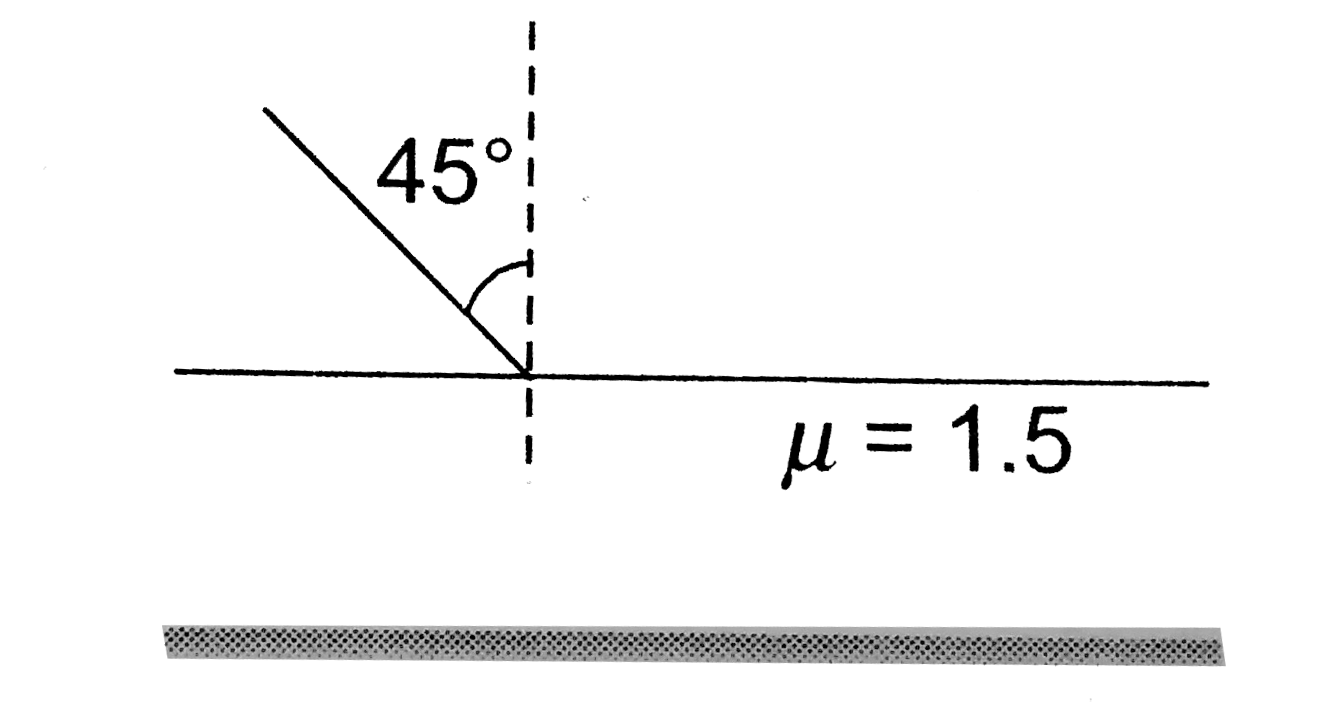Figure shows a point object placed in front of a transparent sphere of radius 20 cm and refractive index 1.5. The sphere forms an image due to refraction at surface I followed by refraction at surface II. The sphere is kept in air and the object is located at distance x from . It is found that for , the image formed due to refraction at surface I is real, the final image formed by the sphere is also real and forms to the right of . For , the image formed by surface I is virtual while the final image formed by the sphere is real and forms to the right of . However for , the image formed by surface I and also the final image formed by the sphere are virtual. It is also found that the final image is virtual if the distance of image formed by surface I from is less than y. The object is now moved away from the sphere so that x becomes large and say, . In the given sphere is replaced by another one of the same radius but of refractive index 2.5, the final image is formed at distance from .
For the object placed at , a sphere of the same radius but of refractive index 2.5 forms an image at distance from

The correct Answer is:C
Topper's Solved these Questions
- RAY OPTICSBOOK - CENGAGE PHYSICSCHAPTER - RAY OPTICSEXERCISE - DPP 1.4
15 Videos
- RAY OPTICSBOOK - CENGAGE PHYSICSCHAPTER - RAY OPTICSEXERCISE - DPP 1.5
15 Videos
- RAY OPTICSBOOK - CENGAGE PHYSICSCHAPTER - RAY OPTICSEXERCISE - DPP 1.2
15 Videos
- PHOTOELECTRIC EFFECTBOOK - CENGAGE PHYSICSCHAPTER - PHOTOELECTRIC EFFECTEXERCISE - Integer Type
4 Videos
- RAY OPTICS AND OPTICAL INSTRUMENTSBOOK - CENGAGE PHYSICSCHAPTER - RAY OPTICS AND OPTICAL INSTRUMENTSEXERCISE - QUESTION BANK
40 Videos
Similar Questions
The graph shows how the magnification m produced by a convex thin lens varies with image distance v. What was the focal length of the used ?

View SolutionA ray of light is incident on the hypotenuse of a right-angled prism after travelling parallel to the base inside the prism. If μ is the refractive index of the material of the prism, the maximum value of the base angle for which light is totally reflected from the hypotenuse is
View SolutionOne side of a glass slab is silvered as shown. A ray of light is incident on the other side at angle of incidence i=45∘ . Refractive index of glass is given as 1.5. The deviation of the ray of light from its initial path when it comes out of the slab is

View SolutionAn α particle and a proton are accelerated from rest by a potential difference of 100V. After this, their de-Broglie wavelengths are λa
and λp respectively. The ratio λpλa, to the nearest integer, is.
View SolutionThe diagram shows a mirror system. If after two reflections the image and the object O coincide with each other, then the value of radius of curvature (in metre) of the concave mirror is (Take a=3m )
'(##CEN_KSR_PHY_JEE_C26_E01_001_Q01##)'
View SolutionA point object is placed at the centre of a glass sphere of radius 6cm and refractive index 1.5. The distance of virtual image from the surface is
View SolutionA point object is placed at the center of a glass sphere of radius 6cm and refractive index 1.5. The distance of virtual image from the surface is
View SolutionA glass sphere of refractive index 1.5 forms the real image of object O at point I as shown in the figure when kept in air of refractive index 1 . If the value of x is kR . Find k
View SolutionFigure shows a point object placed in front of a transparent sphere of radius 20 cm and refractive index 1.5. The sphere forms an image due to refraction at surface I followed by refraction at surface II. The sphere is kept in air and the object is located at distance x from P1. It is found that for x>x1, the image formed due to refraction at surface I is real, the final image formed by the sphere is also real and forms to the right of P2. For x2<x<x1, the image formed by surface I is virtual while the final image formed by the sphere is real and forms to the right of P2. However for x<x2, the image formed by surface I and also the final image formed by the sphere are virtual. It is also found that the final image is virtual if the distance of image formed by surface I from P2 is less than y. The object is now moved away from the sphere so that x becomes large and say, x→∞. In the given sphere is replaced by another one of the same radius but of refractive index 2.5, the final image is formed at distance y2 from P2.
Distance x1 such that for x>x1, the image formed by surface I and also the final image are real, is

View SolutionFigure shows a point object placed in front of a transparent sphere of radius 20 cm and refractive index 1.5. The sphere forms an image due to refraction at surface I followed by refraction at surface II. The sphere is kept in air and the object is located at distance x from P1. It is found that for x>x1, the image formed due to refraction at surface I is real, the final image formed by the sphere is also real and forms to the right of P2. For x2<x<x1, the image formed by surface I is virtual while the final image formed by the sphere is real and forms to the right of P2. However for x<x2, the image formed by surface I and also the final image formed by the sphere are virtual. It is also found that the final image is virtual if the distance of image formed by surface I from P2 is less than y. The object is now moved away from the sphere so that x becomes large and say, x→∞. In the given sphere is replaced by another one of the same radius but of refractive index 2.5, the final image is formed at distance y2 from P2.
Distance x2 such that for x2<x<1, the image formed by surface I is virtual but the final image is virtual. Then, y will be
View SolutionFigure shows a point object placed in front of a transparent sphere of radius 20 cm and refractive index 1.5. The sphere forms an image due to refraction at surface I followed by refraction at surface II. The sphere is kept in air and the object is located at distance x from P_(1) . It is found that for x gt x_(1) , the image formed due to refraction at surface I is real, the final image formed by the sphere is also real and forms to the right of P_(2) . For x_(2) lt x lt x_(1) , the image formed by surface I is virtual while the final image formed by the sphere is real and forms to the right of P_(2) . However for x lt x_(2) , the image formed by surface I and also the final image formed by the sphere are virtual. It is also found that the final image is virtual if the distance of image formed by surface I from P_(2) is less than y. The object is now moved away from the sphere so that x becomes large and say, x to oo . In the given sphere is replaced by another one of the same radius but of refractive index 2.5, the final image is formed at distance y_(2) from P_(2) . As stated above, if the distance of image formed by Surface 1 from P_(2) is less than y, the final image is virtual. Then, y will be
View SolutionFigure shows a point object placed in front of a transparent sphere of radius 20 cm and refractive index 1.5. The sphere forms an image due to refraction at surface I followed by refraction at surface II. The sphere is kept in air and the object is located at distance x from P_(1) . It is found that for x gt x_(1) , the image formed due to refraction at surface I is real, the final image formed by the sphere is also real and forms to the right of P_(2) . For x_(2) lt x lt x_(1) , the image formed by surface I is virtual while the final image formed by the sphere is real and forms to the right of P_(2) . However for x lt x_(2) , the image formed by surface I and also the final image formed by the sphere are virtual. It is also found that the final image is virtual if the distance of image formed by surface I from P_(2) is less than y. The object is now moved away from the sphere so that x becomes large and say, x to oo . In the given sphere is replaced by another one of the same radius but of refractive index 2.5, the final image is formed at distance y_(2) from P_(2) . For the object placed at x to oo , the given sphere of refractive index 1.5 forms an image at distance y_(1) from P_(2) .
View Solutionएक बिन्दु-वस्तु 6 सेमी त्रिज्या तथा 1.5 अपवर्तनांक वाले काँच के ठोस गोले के केंद्र पर स्थित है | गोले कि पृष्ठ से इसके आभासी प्रतिबिम्ब की दूरी है :
View SolutionA point object is situated at a distance of 36 cm from the centre of the sphere of radius 12 cm and refractive index 1.5. Locate the position of the image due to refraction through sphere.
View Solutionचित्र में 1.5 अपवर्तनांक वाले कॉच के काँच के गोले का एक हिस्सा हवा में रखा हुआ दिखाया गया हैं । गोले की त्रिज्या 20 cm हैं । एक बिंदुस्त्रोत गोले की सतह से 25 cm दूर हवा में रखा हैं । अपवर्तन के कारण बने प्रतिबिंब का स्थान निर्धारित करें ।

View Solution
